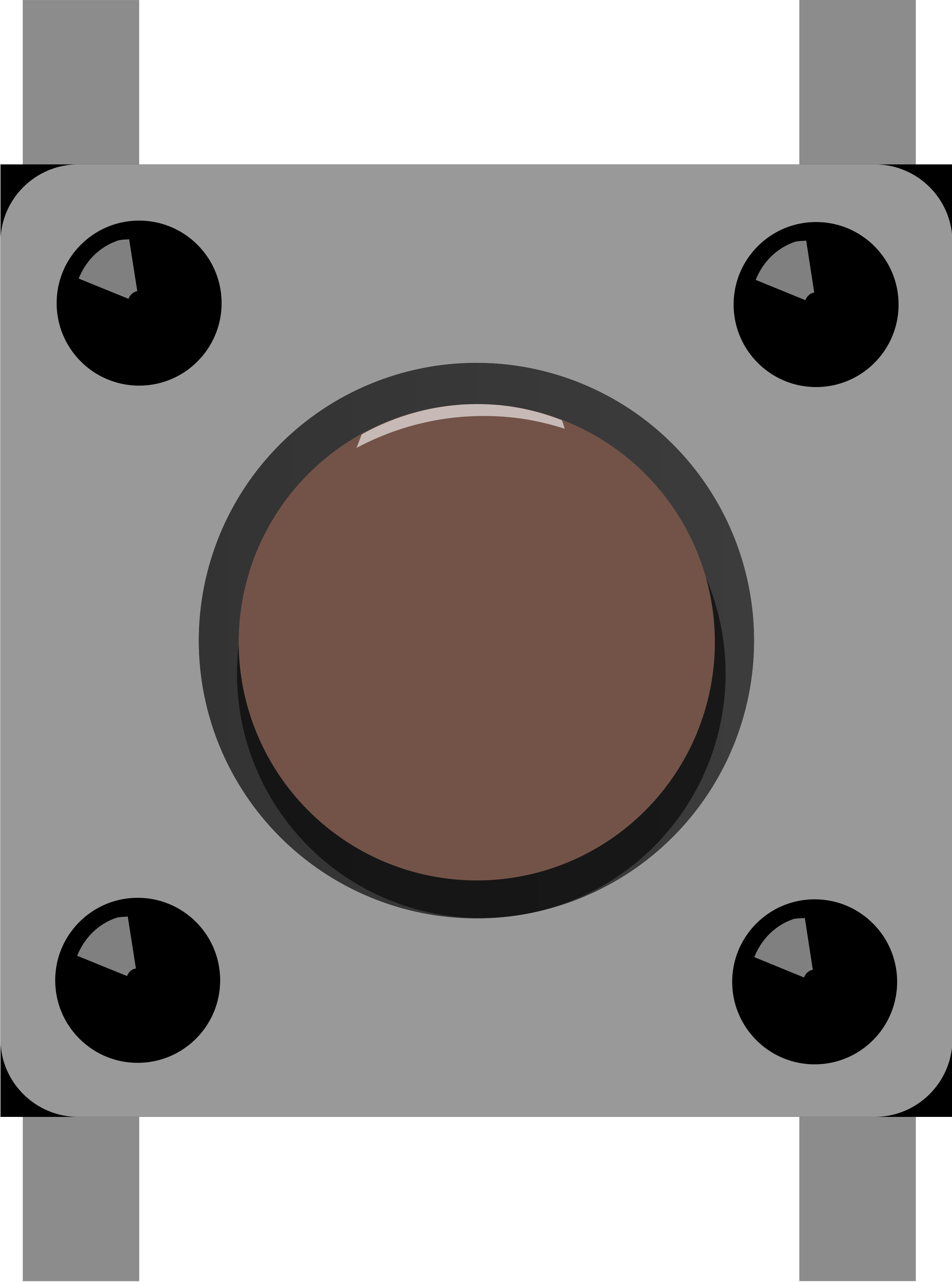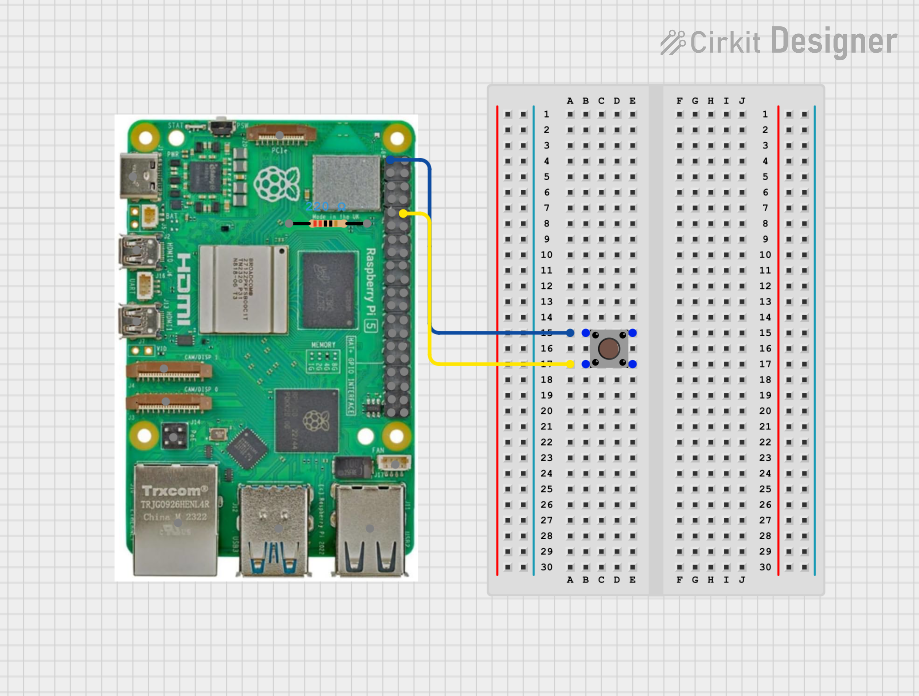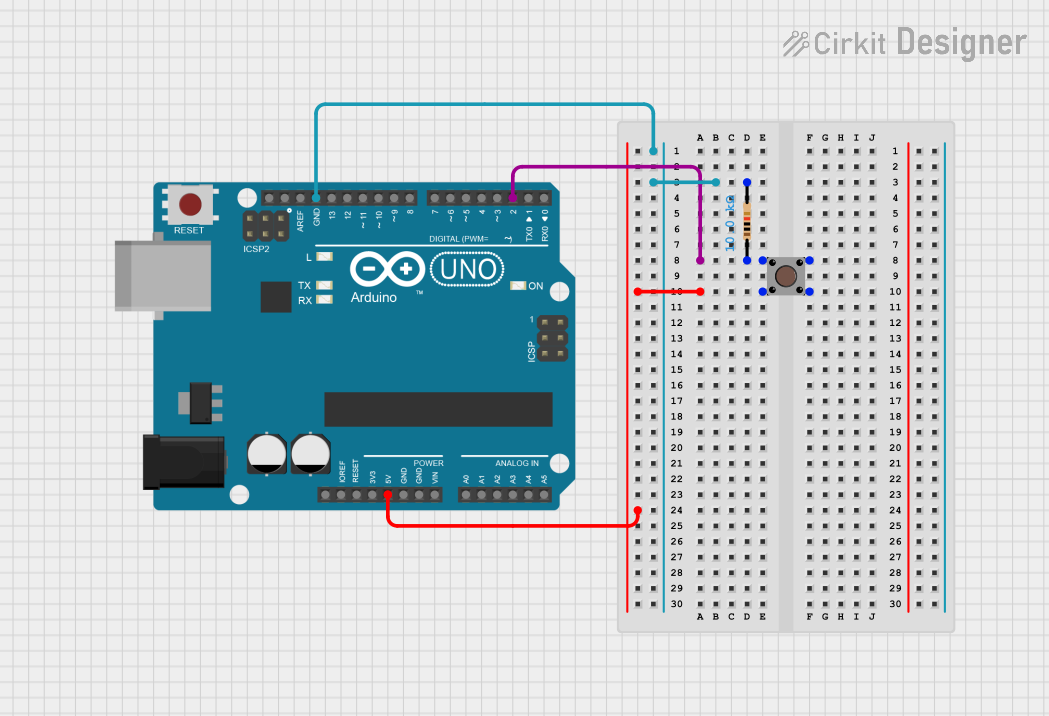
How to Use Pushbutton: Examples, Pinouts, and Specs

 Design with Pushbutton in Cirkit Designer
Design with Pushbutton in Cirkit DesignerIntroduction
A pushbutton is a momentary switch that completes a circuit when pressed and breaks the circuit when released. It is a simple yet essential component in electronics, commonly used for user input in devices such as calculators, remote controls, and microcontroller-based projects. Pushbuttons are available in various sizes and designs, making them versatile for different applications.
Explore Projects Built with Pushbutton

 Open Project in Cirkit Designer
Open Project in Cirkit Designer
 Open Project in Cirkit Designer
Open Project in Cirkit Designer
 Open Project in Cirkit Designer
Open Project in Cirkit Designer
 Open Project in Cirkit Designer
Open Project in Cirkit DesignerExplore Projects Built with Pushbutton

 Open Project in Cirkit Designer
Open Project in Cirkit Designer
 Open Project in Cirkit Designer
Open Project in Cirkit Designer
 Open Project in Cirkit Designer
Open Project in Cirkit Designer
 Open Project in Cirkit Designer
Open Project in Cirkit DesignerCommon Applications and Use Cases
- User input for microcontroller projects (e.g., Arduino, Raspberry Pi)
- Reset or power buttons in electronic devices
- Control panels for industrial equipment
- Doorbells and alarm systems
- Game controllers and interactive devices
Technical Specifications
Below are the general technical specifications for a standard pushbutton:
| Parameter | Value |
|---|---|
| Operating Voltage | 3.3V to 12V (typical) |
| Maximum Current Rating | 50mA to 500mA (depending on type) |
| Contact Resistance | < 100 mΩ |
| Insulation Resistance | > 100 MΩ |
| Operating Temperature | -20°C to +70°C |
| Mechanical Lifespan | 100,000 to 1,000,000 presses |
Pin Configuration and Descriptions
A standard 4-pin pushbutton typically has the following pin configuration:
| Pin Number | Description |
|---|---|
| Pin 1 | Connected to one side of the switch |
| Pin 2 | Connected to the same side as Pin 1 |
| Pin 3 | Connected to the opposite side of the switch |
| Pin 4 | Connected to the same side as Pin 3 |
Note: Pins 1 and 2 are internally connected, as are Pins 3 and 4. When the button is pressed, the circuit between these two groups of pins is completed.
Usage Instructions
How to Use the Pushbutton in a Circuit
Basic Circuit Connection:
- Connect one side of the pushbutton (e.g., Pins 1 and 2) to a pull-down resistor and ground.
- Connect the other side (e.g., Pins 3 and 4) to a voltage source (e.g., 5V).
- The output signal can be taken from the junction of the pull-down resistor and the pushbutton.
Using with a Microcontroller (e.g., Arduino UNO):
- Connect one side of the pushbutton to a digital input pin on the Arduino.
- Use a pull-up or pull-down resistor to ensure a stable signal when the button is not pressed.
Example Arduino Code
Below is an example of how to use a pushbutton with an Arduino UNO to toggle an LED:
// Define pin numbers
const int buttonPin = 2; // Pushbutton connected to digital pin 2
const int ledPin = 13; // LED connected to digital pin 13
// Variable to store button state
int buttonState = 0;
void setup() {
pinMode(buttonPin, INPUT); // Set button pin as input
pinMode(ledPin, OUTPUT); // Set LED pin as output
}
void loop() {
// Read the state of the pushbutton
buttonState = digitalRead(buttonPin);
// If the button is pressed, turn on the LED
if (buttonState == HIGH) {
digitalWrite(ledPin, HIGH); // Turn LED on
} else {
digitalWrite(ledPin, LOW); // Turn LED off
}
}
Important Considerations and Best Practices
- Debouncing: Pushbuttons can produce multiple signals (bounces) when pressed or released. Use hardware (capacitors) or software (debouncing code) to filter out these unwanted signals.
- Resistor Selection: Use a pull-up or pull-down resistor (typically 10kΩ) to ensure a stable signal.
- Voltage and Current Ratings: Ensure the pushbutton's ratings match your circuit requirements to avoid damage.
Troubleshooting and FAQs
Common Issues and Solutions
Button Not Responding:
- Check the wiring and ensure all connections are secure.
- Verify that the pull-up or pull-down resistor is correctly connected.
Button Produces Erratic Behavior:
- This is likely due to signal bouncing. Implement debouncing in hardware or software.
Button Feels Stuck or Unresponsive:
- Inspect the button for physical damage or debris. Replace if necessary.
LED Does Not Turn On in Arduino Circuit:
- Ensure the button is connected to the correct pin and that the pin is configured as an input.
- Verify the LED and its resistor are properly connected and functional.
FAQs
Q: Can I use a pushbutton without a resistor?
A: It is not recommended. Without a pull-up or pull-down resistor, the input pin may float, causing erratic behavior.
Q: How do I debounce a pushbutton in software?
A: You can use a delay or a state-checking algorithm to filter out rapid changes in the button's state.
Q: Can I use a pushbutton to control high-power devices?
A: No, pushbuttons are designed for low-power signals. Use a relay or transistor to control high-power devices.
Q: What is the difference between a pushbutton and a toggle switch?
A: A pushbutton is momentary (only active while pressed), while a toggle switch maintains its state until toggled again.